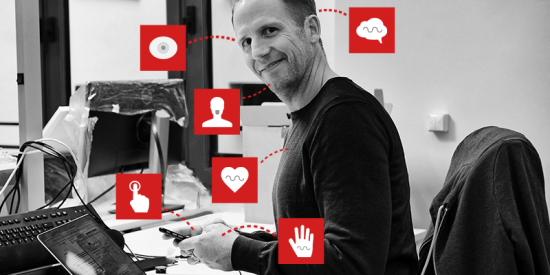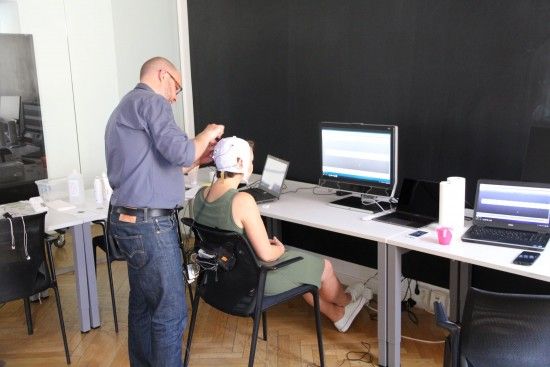Understanding the user with emotion tracking - our findings
We have developed a study on this. Vera Pichardo summarizes more details
Emotion Tracking in Digital Business: Merkle explains how it works
Recently I conducted a study for Merkle with emotion tracking. In this article I will explain what lies behind this method and what makes it so unique. The results of the study are of course also available...
20,000 decisions in 24 hours. Can you imagine? Not at all. Everyone chooses between options thousands of times a day. It's possible because many decisions are made subconsciously.
In economics, there is the model of the "homo economicus", who rationally evaluates all available alternatives and makes purely fact-based decisions. The fact is, however, that emotions guide a large part of our actions and are therefore also important for decisions.
These decisions may seem irrational, but they are not necessarily wrong - behind them lie the experiences of our lives. This explains the importance of emotional appeal in marketing. After all, emotion is the source of motivation.

Why Emotion Tracking?
Emotion Tracking is currently the best method to capture the emotions of the user. In contrast to feelings, emotions are rather subconscious. This means that they are also difficult for the user to describe, recognize and judge. A survey alone is therefore not effective. Various psychophysiological indicators such as depth of breath or heartbeat provide information about the emotional state of a test subject.
The application range of Emotion Tracking in market research is immense. Whether it is the newly designed company website, the design of a poster or the signage in a supermarket: all of these provoke emotions that can be validly measured with the various tracking methods.
Especially in the digital world emotion tracking is an important instrument. If purchase, rental or other transactions are moved to the Internet, there is no face-to-face interaction. The reaction of users to new products or designs is therefore much more difficult to track. This is where studies with Emotion Tracking can help.
The Merkle study in detail
The study design
For a new product of the car rental company SIXT Merkle designed landing pages, whose effects I analyzed by means of emotion tracking. In order to achieve reliable results, careful planning of the study in terms of test subjects, methodology and research questions was essential. The experimental group consisted of twelve people between 20 and 45 years of age.
Measurements were taken:
- depth of breath
- perspiration on the hands
- Heartbeat frequency
- Brain waves
- facial expression

Using eye tracking, the elements that led to the respective emotion were identified. In addition, the test subjects took part in a short survey.
Through the investigation we wanted to clarify the following questions:
- What is the significance of the landing page design?
- Do users prefer an emotional or a factual address?
- What is important to customers in registration processes?


Insights and results
Informative. Intuitive. Interactive.
Merkle has designed a landing page for SIXT's new product that is both intuitive and interactive. Particular attention was paid to the design. The measured values prove the interest of the participants in the page. This had an activating effect, but not overloaded.
And once again with feeling...
Users responded much better to the emotional text than to the factual version. As the measurements show, positive formulations led to a positive activation of the test subjects. It was also shown that the more concrete the examples, the better the effect on the user. Abstract formulations, on the other hand, are not well received.
Registration made easy...
When registering, the rule is: the simpler, the better. With complicated processes the cognitive load increases enormously. The effort for the user should remain low. He does not need additional stimuli on the screens. For the test persons it was far more important to complete the process as quickly as possible. If two technical devices (PC and mobile phone) are used in the registration process, the transition should be as seamless as possible.
My conclusion:
The study was an exciting experience for both the participants and my team. Although it provides valuable insights, Emotion Tracking has so far been used relatively rarely in studies. From my point of view a missed opportunity: The method contributes to a comprehensive understanding of purchase decisions and user behavior. Especially before a relaunch or the launch of a new product, insights can be generated that contribute to economic success.













